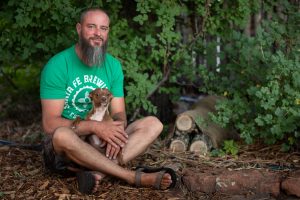
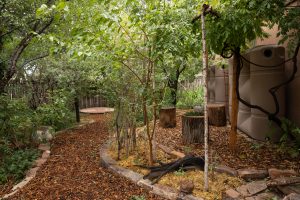
Reese Baker has been designing permaculture landscapes for many years, and with his family has turned his home on a quarter-acre lot in Santa Fe, NM into a teeming oasis of life, complete with wetlands, a pond, trees, and food and flower gardens—not to mention bats, pollinators, fungi, soil life, and other friendly creatures. His vision for Santa Fe is to make it a pilot city for large scale water conservation, capturing each drop of rain to grow gardens and trees, and lessening the pressure on municipal water systems while increasing local food production.
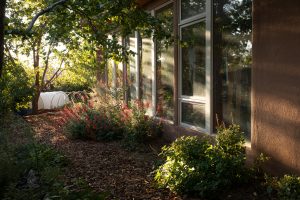
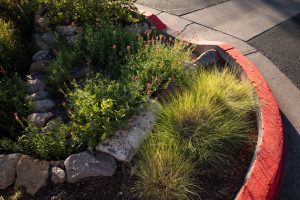
This interview is part the Good Earth series, a project supported by the New Mexico Department of Agriculture Healthy Soils Initiative and led by photographer Esha Chiocchio. It features a set of eight videos on soil stewards in New Mexico. Please check out the short videos here.
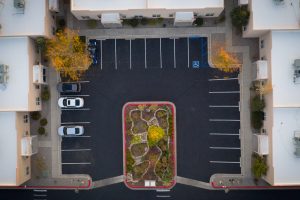
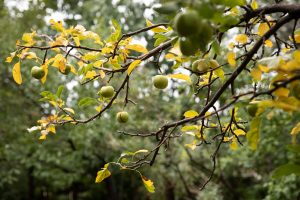
All phots by Esha Chiocchio
0’16 Regenerate 2021 conference
2’36 wanted to be an organic farmer
3’12 started catching rain in five-gallon buckets
4’09 residential work water catchment and water reuse
4’36 when you catch water in the desert you have an excess
5’16 inspired by Zuni bowls
5’51 slowing down water
6’38 biomimicry is a feature of permaculture
7’17 origin of the term “permaculture”
7’27 set up human civilizations to work with nature
7’39 the problem with how we handle water
9’04 5 billion gallons of water falls on the city of Santa Fe every year, but most of it runs off
9’43 what would happen if we infiltrated all that water into the soil
10’18 moving pollutants through biological systems and neutralizing them
11’01 creating wildlife habitat and human food forests in cities
11’23 shifting from stormwater drainage to stormwater infiltration
12’17 water draining off of streets and parking lots is toxic
12’47 moving water through fungal mycelium to clean it and make use of the resulting compounds
13’36 how to rethink large parking lots
13’51 adding trees to parking lots
14’46 gradual slopes allow water flow
15’08 what is a rain garden?
16’42 rain gardens can capture water that moves into aquifers and move laterally into arroyos
17’27 water captured in this way can become ephemeral springs
18’16 providing water for downstream users and other states
18’53 permeable pavement
19’40 the vast potential of roofwater capture and the positive impact on city water supply
21’06 the vast potential of roofwater capture
22’49 Reese’s house and what he’s doing
24’06 working with rain water and gray water
24’29 pond and wetland
24’50 the wildlife that comes because of the water in the mini-ecosystem
26’10 building soil and microclimates
26’46 soil building techniques on his property
28’00 sheet mulching
28’25 mycorrhizal fungi cultivation and function
29’44 humans could be the secret to the restoration of the earth
30’25 working with kids
31’07 in the sixth mass extinction
31’37 explaining a rain garden to school kids
31’54 Mississippi river dead zone
32’21 communion with the smallest things that are alive is the key to our survival
32’49 the human and ecological microbiomes
33’33 using perennial agriculture
34’51 the process of bringing dead soil back to life at his house
35’43 using organic vs inorganic fertilizer
36’28 mulching often
36’52 how mulch works
37’15 he’s added six feet of organic matter over the years
38’22 seeing layers in the soil
39’03 decomposition process is fast
39’53 engaging the larger residential neighborhood in water conservation and garden practices
41’08 turn neighborhood into a pilot project as an environmental educational location
41’29 capturing the water from streets
42’17. keeping water from leaving neighborhoods, and instead soak into the soil
43’28 growing mushrooms in the desert
44’32 fungi that break down wood
45’52 fungal process actually producing water
46’40 fungi breaking down toxins
47’07 what do toxic compounds turn into when fungi transform them?
47’40 the transformation of urban environments
48’12 cleaning the world if we have a paradigm shift
49’06 vision of an urban ecosystem
49’38 getting kids into the business and political aspects of making all this happen
50’27 vision of the city as a complex ecosystem with water, fruit and nut trees, food, migratory birds, water, and that is ever more biodiverse than the land around it
51’09 20-year goal to set up pilot projects
52’18 rethinking what we mean by “pests” and “nuisance” creatures
53’05 see theraincatcherinc.com



Subscribe:
Apple Podcasts
Spotify